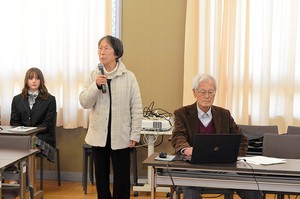By KAZUYA ITO/ Staff Writer
March 9, 2022 at 16:43 JST
 The Justice Ministry (Asahi Shimbun file photo)
The Justice Ministry (Asahi Shimbun file photo)
The Cabinet has approved legislation for the first revisions of penal provisions under the Criminal Law in more than a century.
The changes are designed to impose penalties that better promote rehabilitation and reduce the recidivism rate, especially among those who complete their prison terms.
Under the current law, prison sentences are differentiated by those that require inmates to work and those that do not.
The Cabinet on March 8 gave the green light to legislation that would effectively combine these two types of sentences into one.
The penal provisions have remained untouched since 1907, when the current Criminal Law was established.
The legislation will be submitted to the current Diet session. The revised law is expected to be enacted within three years.
The no-labor prison sentence was considered meaningless because only 0.3 percent of new inmates were given such sentences in 2020.
In addition, close to 80 percent of inmates serving no-labor sentences as of the end of March 2021 had volunteered to do work in prison.
As for prison sentences with labor, complaints have arisen that inmates serving these terms did not have enough time to undergo counseling and other rehabilitation measures.
Under the proposed revisions, decisions will be made based on the circumstances of each inmate as well as the length of their prison terms. Some inmates may not be required to do any work at all.
Those convicted of drug or sex crimes could be allotted much more time in an organized correctional program matching their needs.
Under the current law, wording about prison sentences state that the inmate will have to do the required work. That will change to wording that also clearly states that the objective is to improve and rehabilitate the inmate.
Another factor behind the planned revised penal provisions is the graying of the inmate population.
In 1989, 2.1 percent of all convicts were 65 or older, but by 2020 that ratio had increased to 22.8 percent. Many of the older inmates cannot work in prison due to declining physical health and cognitive functions.
But because of the required work provision, such inmates are made to do simple tasks, such as folding paper.
In addition, about 20 percent of inmates 65 and older commit crimes after their release and are back in prison within a year, compared with the rate of 15.7 percent for all inmates.
Many of the older inmates have no liaison on the outside, such as parole officers who can be consulted by those released early on parole.
The proposed legislation would allow those who have completed their terms to consult with parole officers if they so desired. It would also extend from one year to two years the period in which ex-cons can be provided food and a place to live.




















A peek through the music industry’s curtain at the producers who harnessed social media to help their idols go global.
A series based on diplomatic documents declassified by Japan’s Foreign Ministry
Here is a collection of first-hand accounts by “hibakusha” atomic bomb survivors.
Cooking experts, chefs and others involved in the field of food introduce their special recipes intertwined with their paths in life.
A series about Japanese-Americans and their memories of World War II